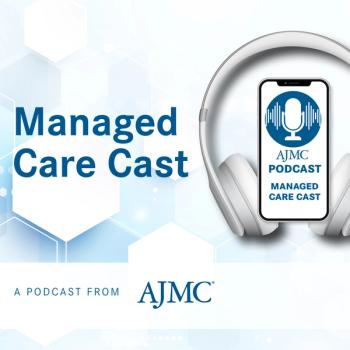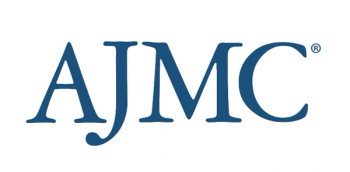
The editors in chief of AJMC discuss the key managed care research and news from 2025 as the journal celebrated its 30th anniversary.

The editors in chief of AJMC discuss the key managed care research and news from 2025 as the journal celebrated its 30th anniversary.

To mark the 30th anniversary of The American Journal of Managed Care (AJMC), each issue in 2025 includes a special feature: reflections from a thought leader on what has changed—and what has not—over the past 3 decades and what’s next for managed care. The December issue features a conversation with AJMC Co–Editors in Chief A. Mark Fendrick, MD, director of the Center for Value-Based Insurance Design and a professor at the University of Michigan in Ann Arbor; and Michael E. Chernew, PhD, the Leonard D. Schaeffer Professor of Health Care Policy and the director of the Healthcare Markets and Regulation Lab at Harvard Medical School in Boston, Massachusetts.

This study quantified the trends over time in utilization of, spending on, and access to CT fractional flow reserve, the first artificial intelligence (AI)–enabled clinical software reimbursed by Medicare.

Use of low-value care services during COVID-19 exhibits substantial heterogeneity but, on average, shows declines similar to the use of high-value services; low-value care use lags behind high-value care use in the rebound phase.

The different approaches to setting benchmarks for population-based payment models (empirical, bidding based, and administratively set) have unique advantages and challenges.


Physician practices account for a significant amount of variation in spending.

To mark the 25th anniversary of the journal, each issue in 2020 includes an interview with a health care thought leader. The December issue features a conversation with the journal’s co-editors-in-chief, Michael E. Chernew, PhD, and A. Mark Fendrick, MD.

Analysis of spending differences among accountable care organizations (ACOs) may help identify cost savings opportunities. We examined the magnitude and sources of spending variation among ACOs over 4 years.

This large-scale, national study shows geographic variation in provider supply and hospital access for low- and high-income communities following the Affordable Care Act.

Most patients receiving multimodality cancer care receive care from different practices. Therefore, episode-based payments in oncology must hold multiple providers accountable for costs and quality.


Steering patients who visit providers with above-median prices to their market’s median-priced provider would save 42%, 45%, and 15% of laboratory, imaging, and durable medical equipment spending, respectively.


For a set of common physician services, employer-sponsored Medicare Advantage plans are found to pay prices that are similar to traditional Medicare rates.

Higher cost sharing is associated with reduced branded antidepressant initiation among patients trying generic therapy. Dynamic benefit designs could enhance access to branded medications when appropriate.

Finding ways to improve outcomes and reduce the cost of care is imperative for patients with chronic conditions. A combination of health information technology use, patient and provider engagement, and attention to the clinical services can promote success in this area.

Following the results of the recent presidential election, AJMC® Co-Editors-in-Chief weigh in on the implications of this new chapter in health reform.

Transitioning to a healthcare system based on accountable care presents many challenges, though the potential benefits may be well worth the effort.

The authors undertook a literature search on treatment intensification in diabetes care to identify relevant research that has been published since 2000.

Arkansas has implemented multi-payer payment reform incorporating both episodic and Patient-Centered Medical Home models. Early perceptions of a sample of stakeholders were largely positive to date.

As the US healthcare system transitions from volume to value, there is some concern that while new payment models and reforms may be neither conceptually flawed nor badly designed, the implementation of these reforms may be insufficient to fully achieve any potential success. If we get the architectural plan right but our building materials and methods are flawed, we wind up with a disappointing result.

It is with an incredibly heavy heart that we must announce the death of our good friend and AJMC associate editor, Seema Sonnad. Seema suffered a fatal cardiac arrhythmia while running an ultramarathon in Seattle.

The founding mission of AJMC was to bring the best available and most relevant evidence regarding efficient clinical and managerial practice to a broad spectrum of healthcare stakeholders-a mission that remains unchanged to this day.

The authors provide a framework to capture additional benefits that may result from VBID programs, extending beyond utilization and outcomes to productivity, engagement, and talent.

Medicare-Advantage Prescription drug plans (MA-PDs) and standalone PDPs appear to respond to different incentives for plan design.

The authors found no consistent pattern in the concordance between CER evidence and subsequent utilization patterns.


This commentary discusses why antibiotics and the treatment of infectious diseases present a special case for pharmaceutical development, pricing, and appropriate utilization.

Data about escalating prices for cancer drugs laid the groundwork for the panel that followed, where Michael E. Chernew, PhD, Harvard health economist and co-editor-in-chief of The American Journal of Managed Care, outlined how changing the paradigm will require a different kind of shopping.

Published: December 15th 2020 | Updated:

Published: December 10th 2020 | Updated:

Published: May 28th 2015 | Updated:

Published: December 28th 2013 | Updated:

Published: April 23rd 2014 | Updated:

Published: November 23rd 2021 | Updated:

259 Prospect Plains Rd, Bldg H
Cranbury, NJ 08512
© 2025 MJH Life Sciences®
All rights reserved.
